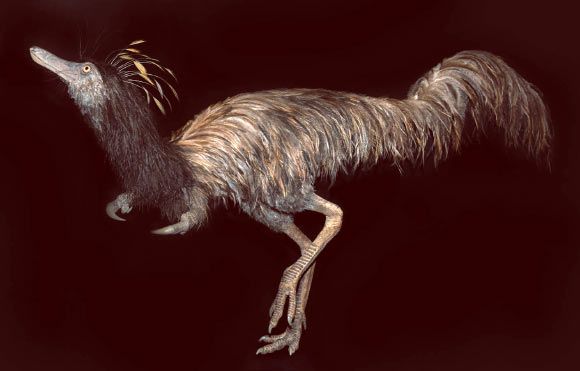Researchers unearthed a new dinosaur species that has been named it in honor of the mythical character ‘Captain Hook’ because of a unique hooked claw at the end of its arms.
Alvarezsaurids were typically small (between 1 and 3 m, or 3.3 and 9.8 feet, long) and had exceptionally short arms with a huge hypertrophied claw at the end, very long legs, a long snout filled with tiny teeth, and a body covered in sleek primitive feathers.
They are known mainly from South America, Asia, and to a lesser extent North America.
Trierarchuncus prairiensis is the youngest known alvarezsaurid and was one of the very last dinosaurs, which went extinct during the end-Cretaceous mass extinction event.
The dinosaur’s fragmentary remains — three hand claws of different sizes — were collected from the Hell Creek Formation of Montana.
One claw is the most complete known for Alvarezsauridae and shows their hand claws were more hooked/curved than previously thought.
The extra hookedness/curvature would have been beneficial for digging or breaking apart rotten wood to search for insect prey.
“The new fossils represent a growth series from juvenile to adult,” said lead author Dr. Denver Fowler of Badlands Dinosaur Museum and colleagues.
“This is important as it is recognized that dinosaurs changed in shape, often significantly, as they grew.”
“Indeed, the fossils show that as Trierarchuncus prairiensis grew its hand claw became more robust; blood vessel grooves on the sides of the claw became more deeply embedded in bone; and the claw surface developed from being smooth in young individuals, into a rough surface texture in adults.”
“Change through growth is significant as some previously named species of alvarezsaurids were described based on fossils that were small and probably pertained to young individuals,” the paleontologists said.
“The new findings suggest that some of the supposedly unique features of these previously named species may in fact be due to their immature condition, rather than representing defining characteristics of a species.”





























